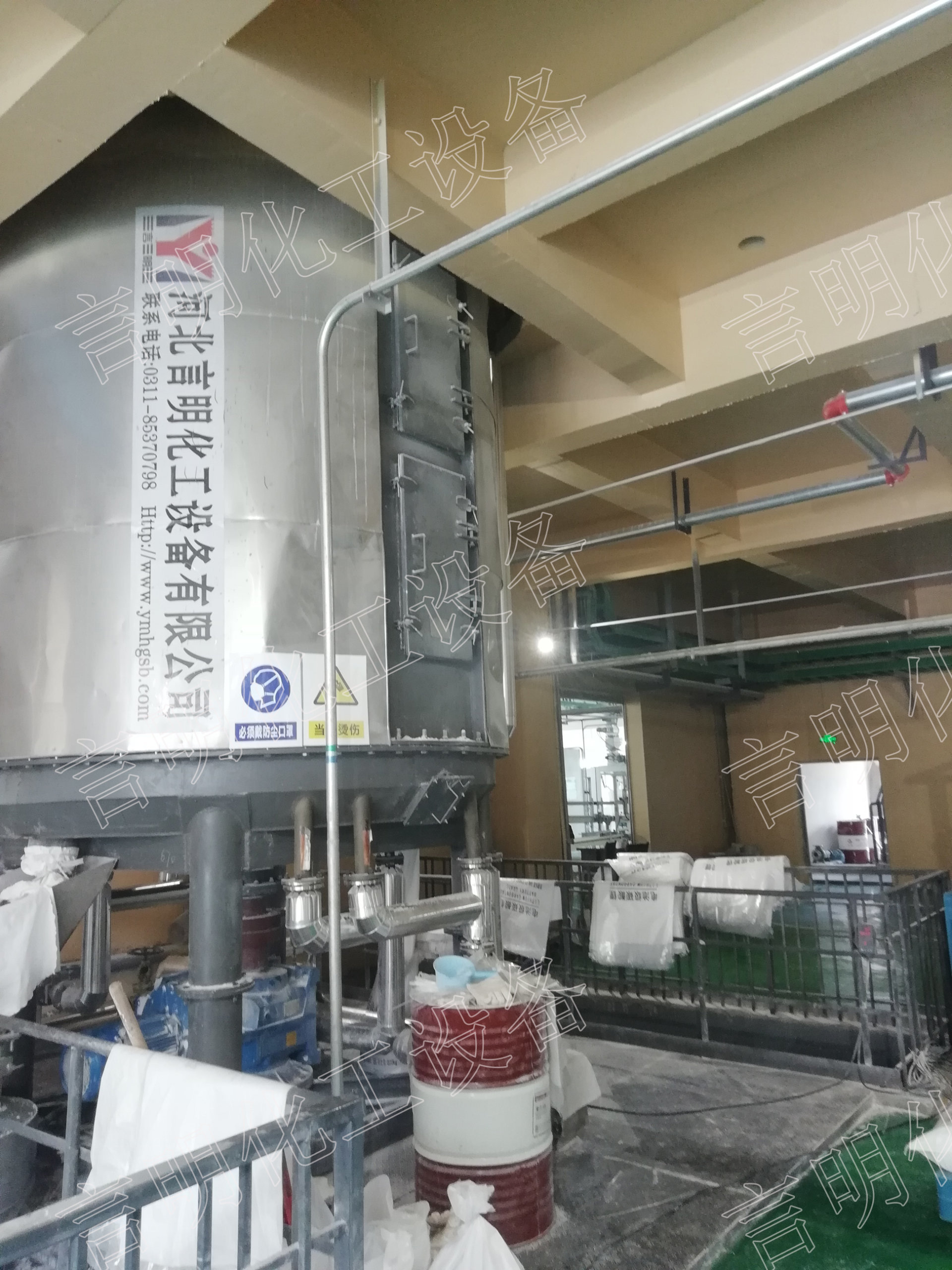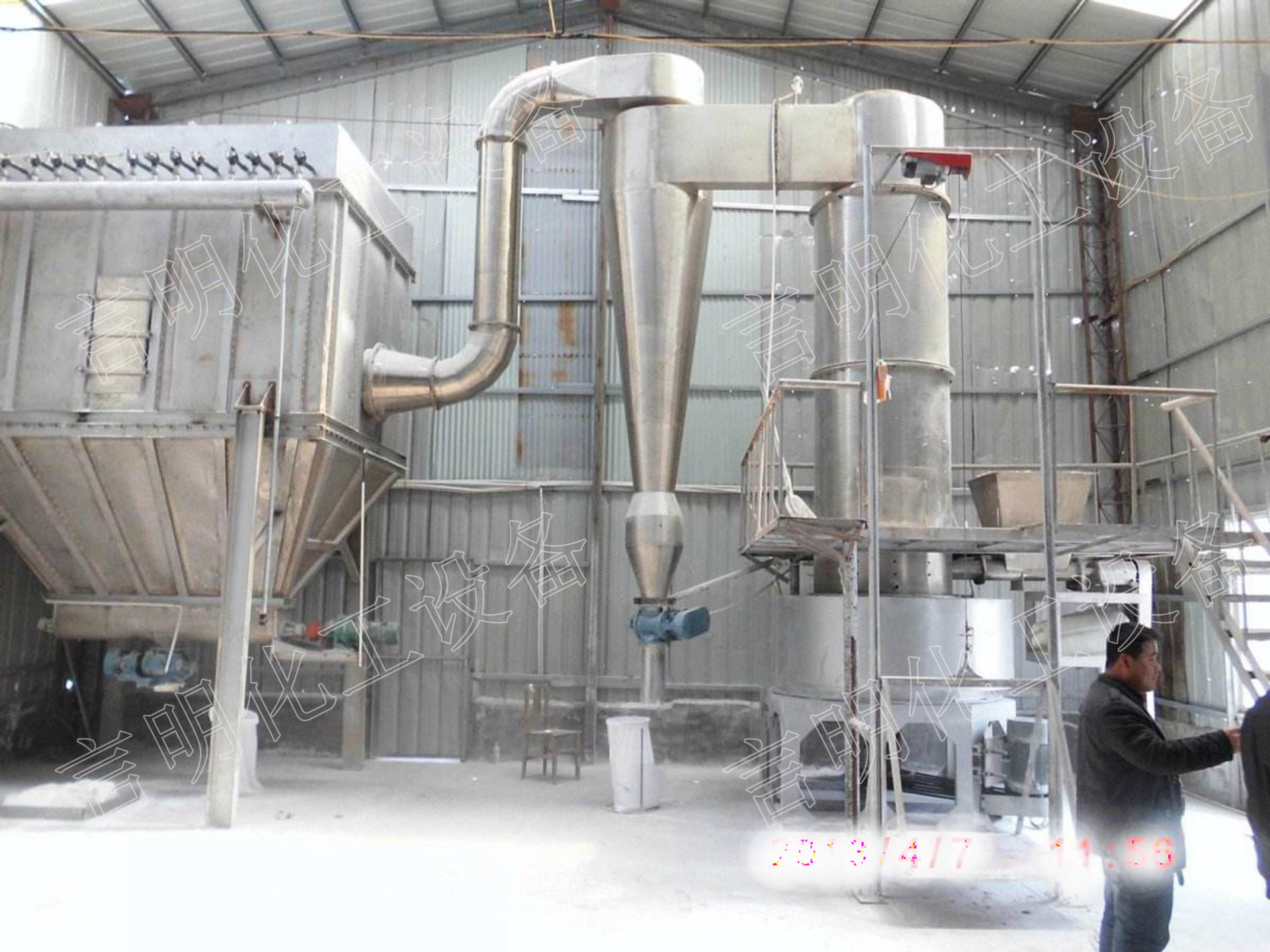
Battery grade lithium carbonate energy saving and environmental protection low magnetic material type disc continuous dryer
Still deciding? Get samples first, Contact US !
View similar products
Tag list
- Product Description
-

1. Material characteristics:
Lithium carbonate, an inorganic compound with the chemical formula Li2CO3Colorless monoclinic crystal or white powder, density 2.11 g/cm3Melting point 723 ℃. Can be used to make ceramics, drugs, catalysts, etc. It is a commonly used raw material for lithium-ion batteries.
The main raw materials for the production of lithium carbonate are spodumene and brine, and lithium carbonate is also used as raw material for the production of lithium carbonate.
Lithium carbonate is loose powder, but its fluidity is not good. According to the different production raw materials and processes, the water content before drying is 8%-15%, and the water content of the product after drying is required to be 0.1-0.4.
2. Special drying process:
Lithium carbonate drying has the following characteristics and requirements: the material is loose, but the fluidity is not good, and the temperature resistance is high; It is required that the energy consumption is low, the material is heated evenly, the operating environment is good, and the index requirements are met at one time. Battery grade lithium carbonate has strict requirements on new magnetic substances in the drying process (generally <30ppb).
However, the traditional hot air drying and the emerging microwave drying and far infrared drying have their own shortcomings rather than the ideal choice for lithium carbonate drying. For example, hot air drying has the disadvantages of high energy consumption (thermal efficiency is only 30%-40%) and poor operating environment (large dust), microwave drying has the disadvantages of large investment in equipment, uneven drying of materials, "hot spots" and "thermal runaway" during heating, and easy damage to components. Far-infrared drying has the disadvantages of complex structure and difficult heating and high energy consumption.
Hebei Yanming Chemical Equipment Co., Ltd. has successfully used energy-saving and environment-friendly disc continuous dryer as lithium carbonate drying equipment according to material analysis and many years of engineering experience, and has provided drying system solutions for many manufacturers of this material.
In view of the requirements of lithium salt and battery material industry for magnetic substances after drying (generally within 30ppb), our company took the lead in proposing to change the contact material parts (such as cloth tray, drying tray, inlet and outlet, rake leaf, etc.) of disc continuous dryer from stainless steel to titanium and non-metallic materials, and designed and reformed the drying equipment of many battery material manufacturers. If the magnetic material of the product after drying is not strict, the equipment material can choose 304 stainless steel or 316L stainless steel.
Process brief introduction: the lithium carbonate wet material transported from the previous process is continuously and quantitatively added into the energy-saving and environment-friendly disc continuous dryer by the quantitative feeder for drying operation. the material completes the heat and mass transfer process in the flow process to achieve the purpose of drying. After the dry material is cooled in the dryer to reach the packaging temperature (usually at 40-60 ℃), it is discharged from the discharge port at the bottom of the dryer into the next process, and the tail gas escaping from the material is discharged from the wet discharge port at the top of the dryer after dust removal.
3. Process characteristics:
Continuous operation, high thermal efficiency. Since the disc type continuous dryer is dried by conduction heat transfer, no air (or very little air) is passed into the dryer during the drying process, and its tail gas carrying amount is very small, so its thermal efficiency can reach more than 85%;
② Less material loss and good operating environment. In the drying of lithium carbonate in the disc continuous dryer, because the materials go in and out, the distribution of the materials is wet and dry, and the flow rate of the drying tail gas is extremely low (about 0.1 m/s), the material dust is difficult to float to the top of the equipment and is rarely carried away by the tail gas, which not only does not lose the materials, but also does not pollute the environment, thus meeting the requirements of environmental protection, can recover more than 99.9% of the dust;
The adjustable equipment, material drying uniform adjustable. The effect of material drying can be conveniently adjusted by adjusting the speed of the equipment, adjusting the thickness of the material layer, the flow rate of the heat source, the temperature of the heat source, the number of rake arms, the form, size and angle of rake leaves, the amount of material added and the number of drying trays in the dryer;
④ In view of the requirements of the battery material industry for magnetic substances after drying (generally within 30ppb), our company took the lead in proposing to change the direct contact material part of the disc continuous dryer from stainless steel to titanium and scrap metal, and designed and reformed the drying equipment of many battery material manufacturers to meet the requirements of the final customer.
⑤ Stable operation, long service life and simple operation of the equipment;
The material flow direction is single, no backmixing phenomenon, uniform drying, stable quality, no need to remix;
⑦ Each layer of drying tray can be separately introduced into the heat medium or cold medium to heat or cool the materials, and the upper part of the drying and lower part of the cooling can also be realized in one device, and the temperature control of the materials is accurate and easy;
⑧ For the small particles in the wet material, the special crushing device is added to the appropriate position inside the dryer, so that the crushed small particles are powder, which can strengthen the heat transfer and drying process and ensure the uniformity of the dry material;
⑨ Easy installation, small footprint. The dryer is delivered as a whole and transported as a whole. It only needs to be hoisted in place, and the installation and positioning are very easy. Due to the layer-by-layer arrangement and vertical installation of the drying tray, even the drying area is large and the floor area is small.
The use of patented technology (utility model patent, patent number: ZL2016212122004), to avoid the dryer transmission device slip, so that the dryer is not damaged, normal operation.
The upper part of the dryer is provided with a cloth distribution device to ensure that the materials can be evenly distributed on the drying tray, and to prevent the materials from falling directly into the drying tray from the feeder to damage the rake leaves of the rake rod and uneven cloth.
For disc-type continuous dryers with large material circulation, our company has a special design for drying to prevent wet materials from falling directly to the chassis and causing unqualified product moisture.
Battery grade lithium carbonate energy saving and environmental protection low magnetic material type disc continuous dryer
Still deciding? Get samples first, Contact US !
Products Category
Tag list
Get Free Consultation Information
Note: Please leave your email address, our professionals will contact you as soon as possible!
Related Products
Keep Your Word And Be Virtuous










